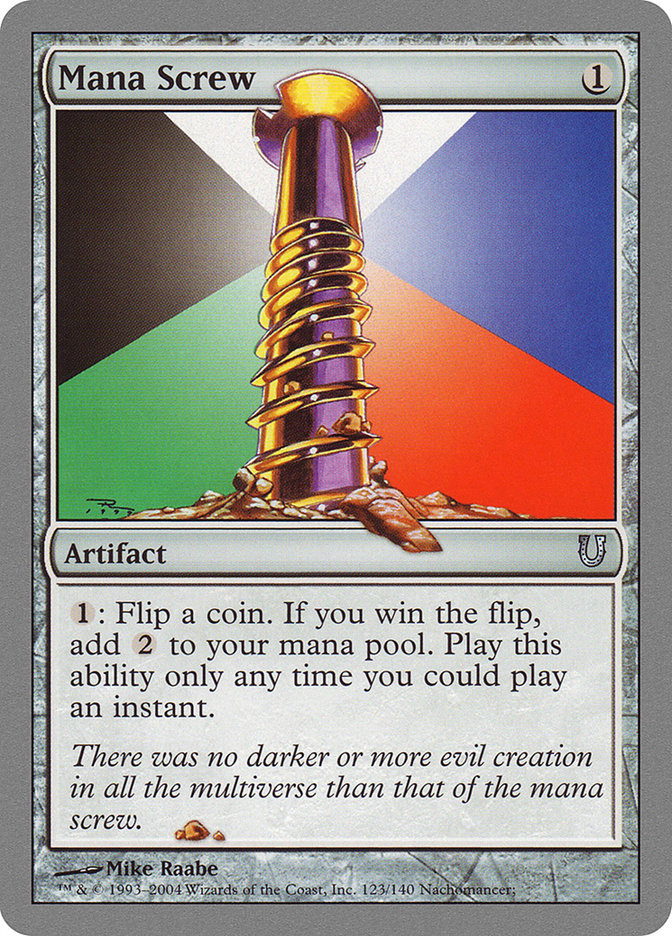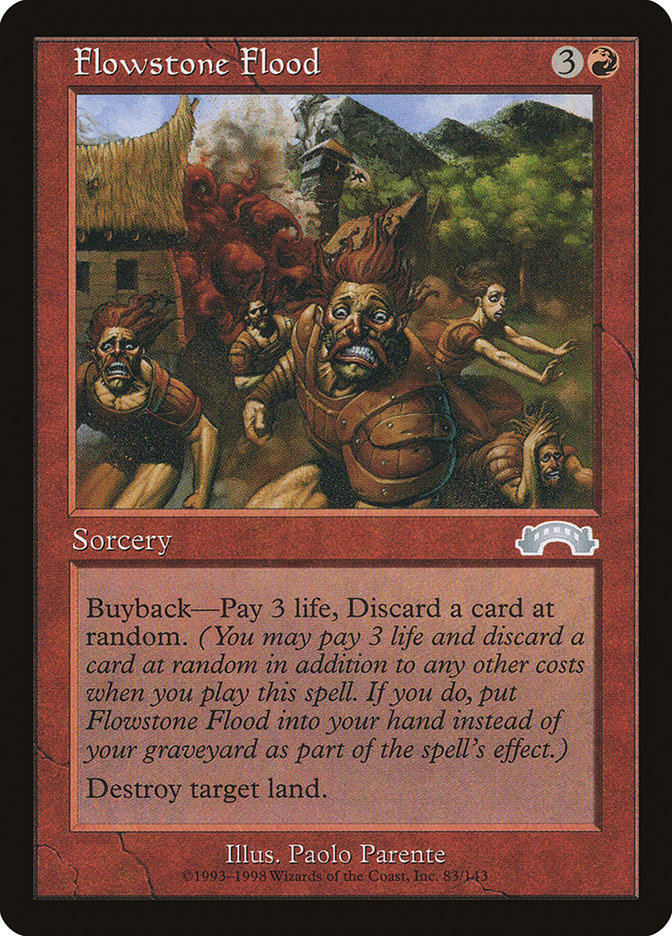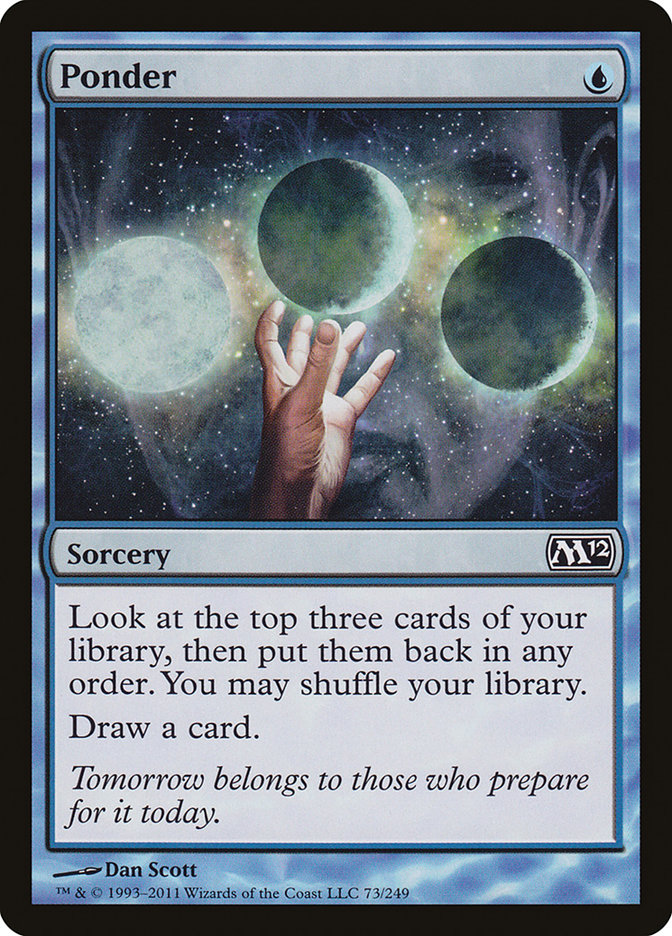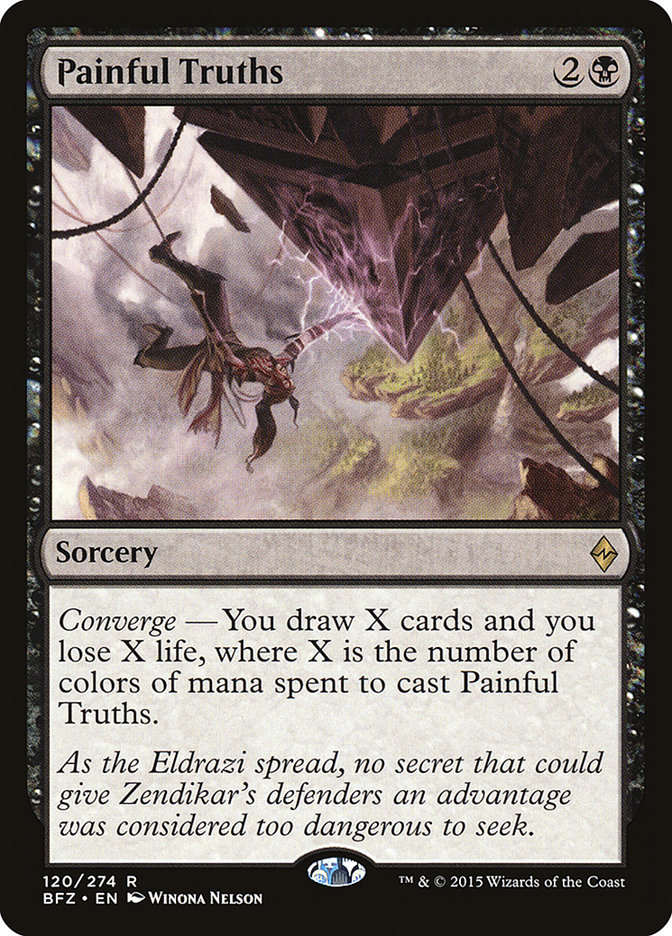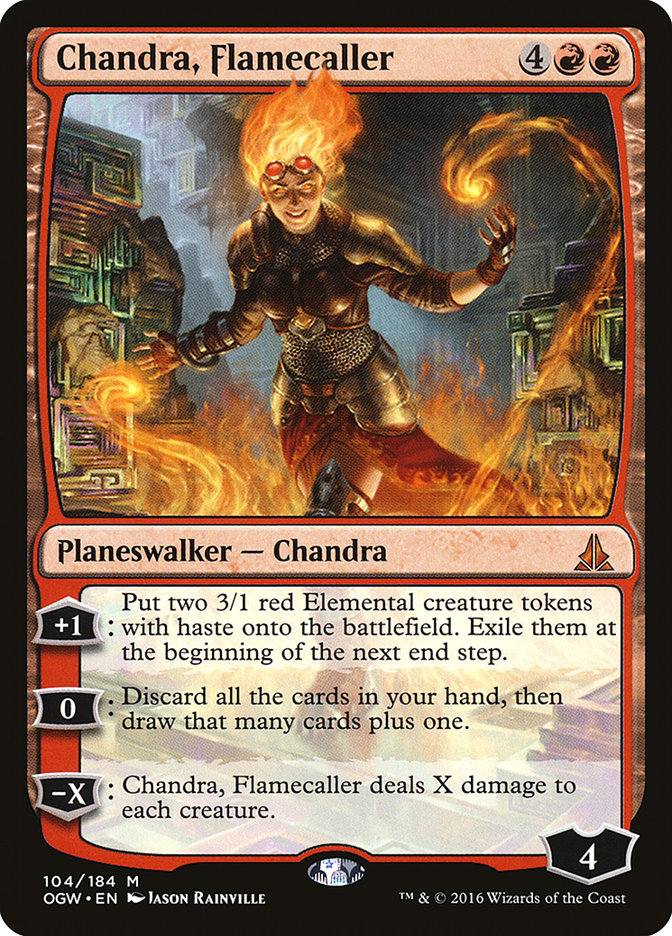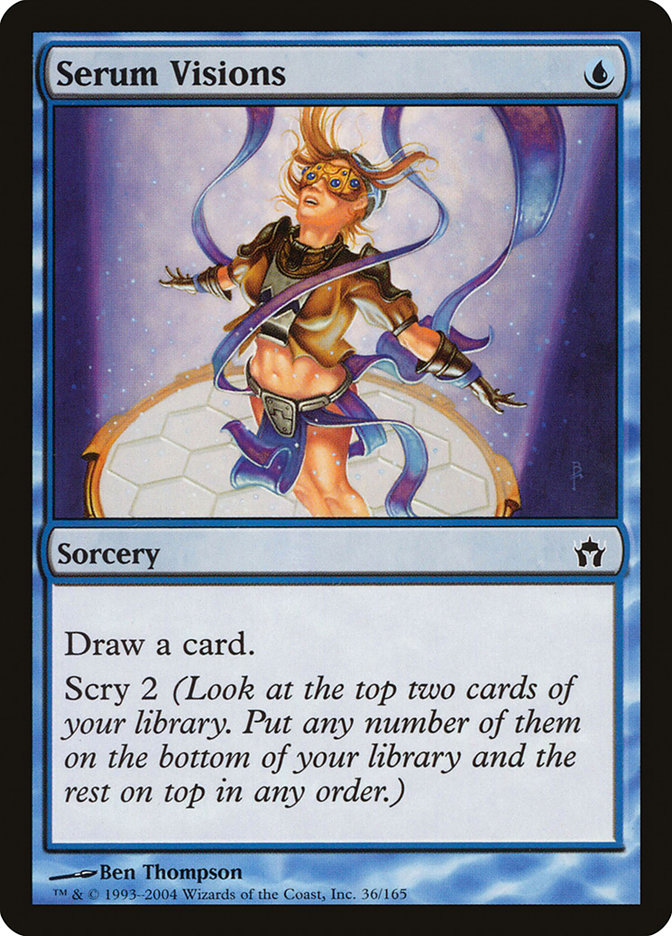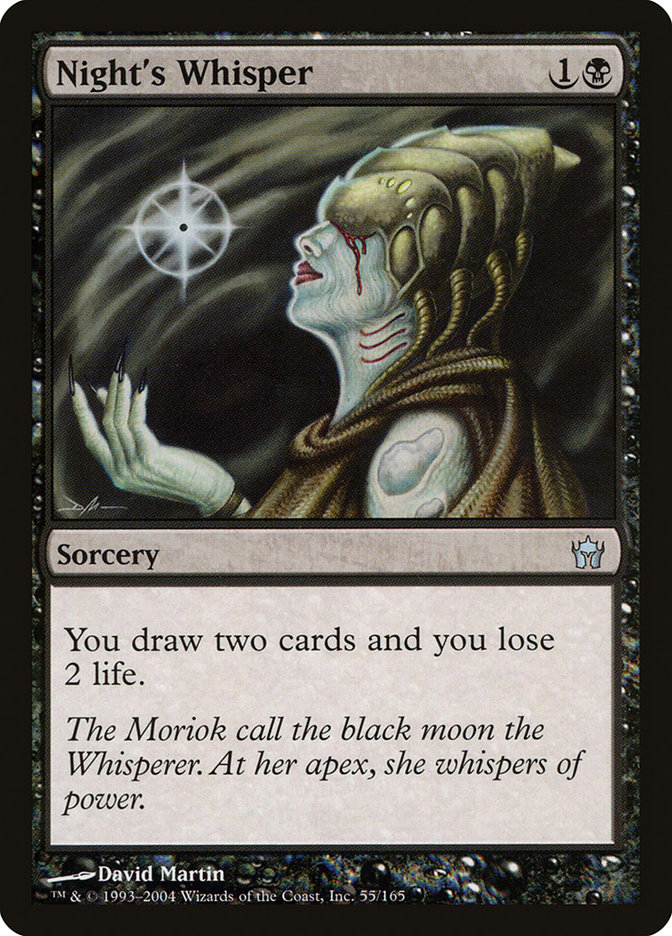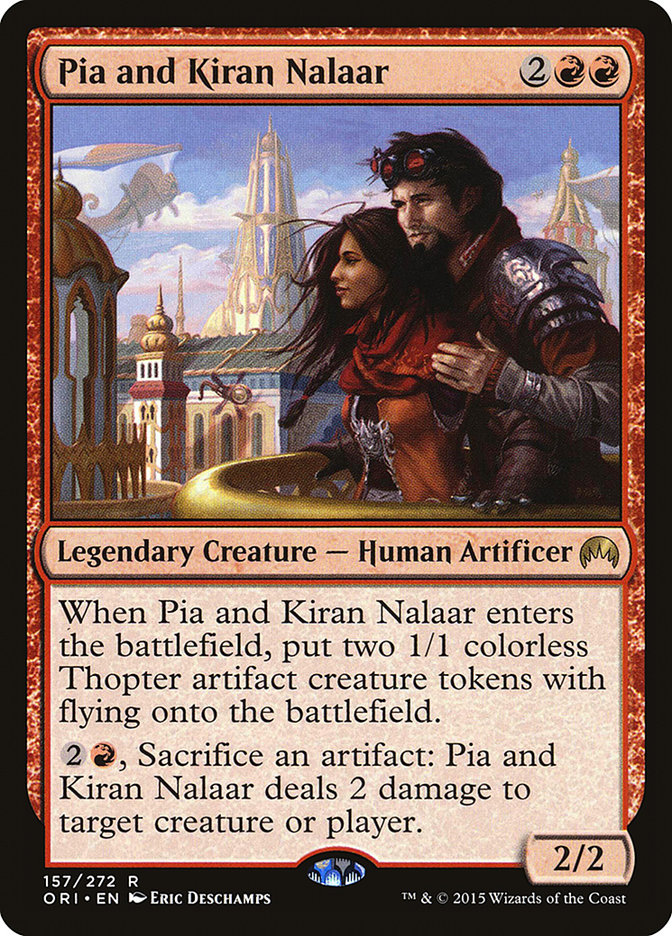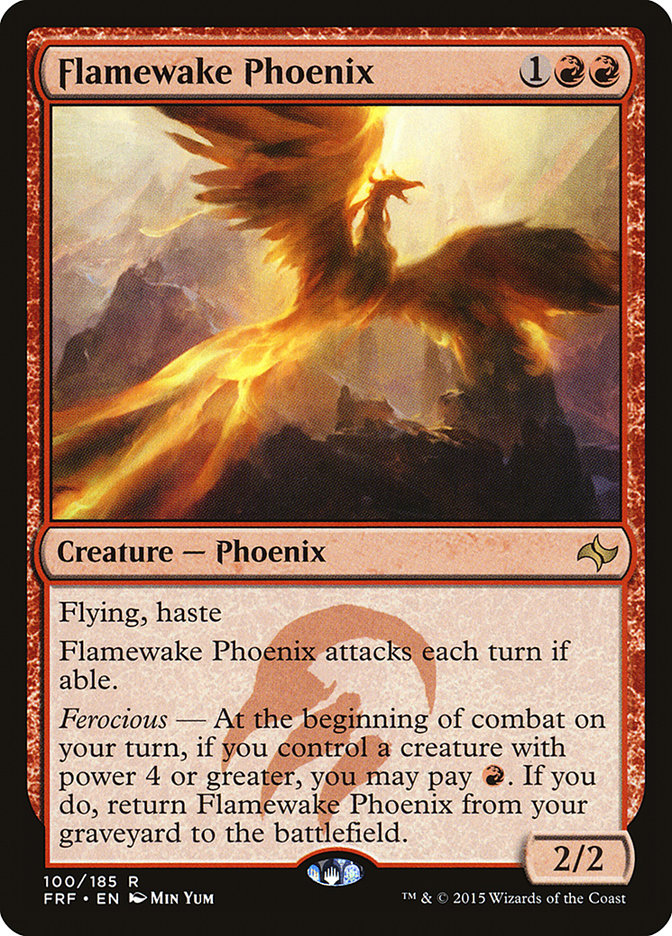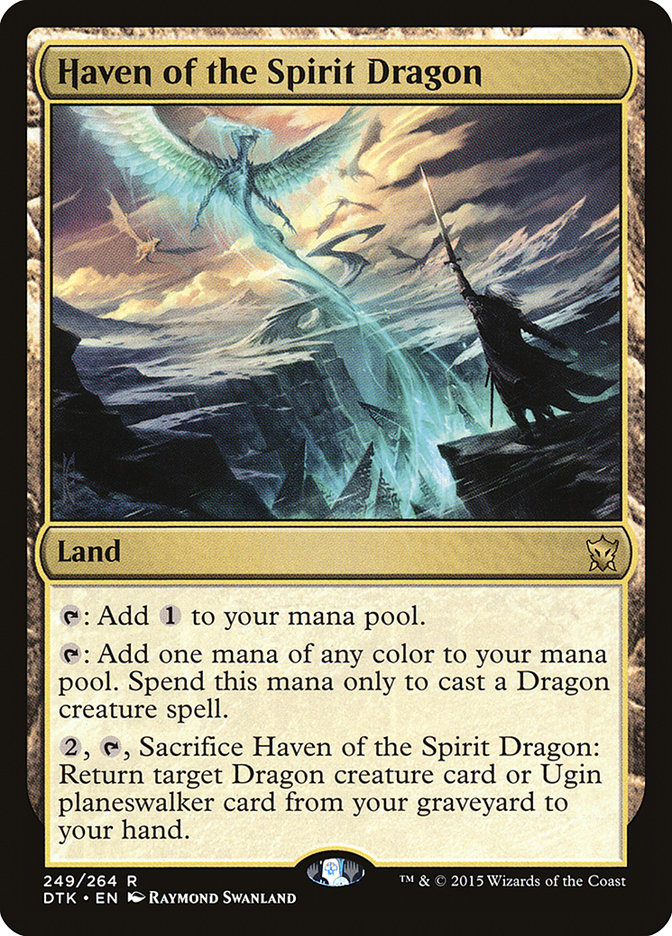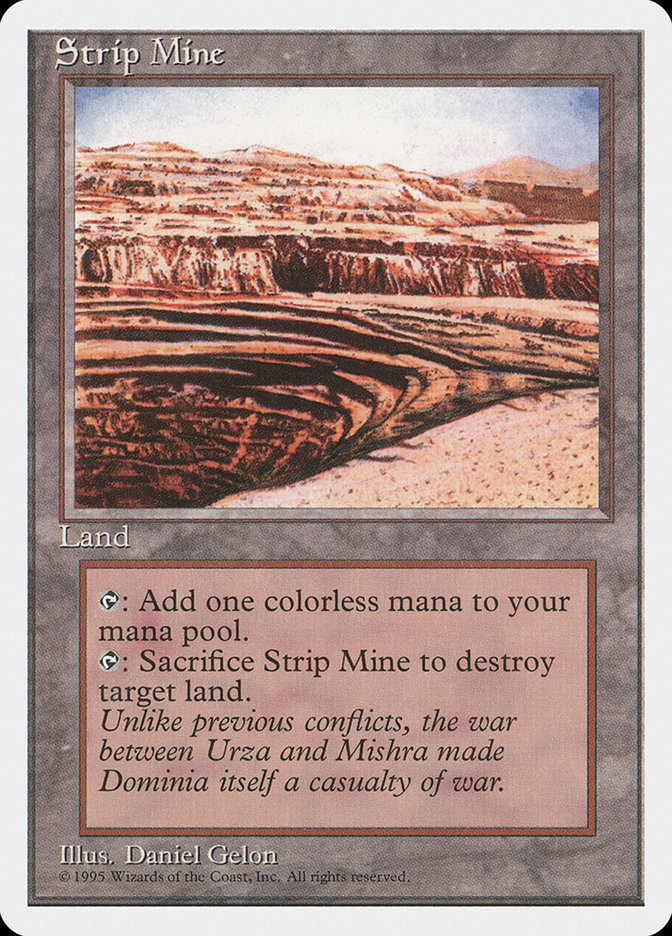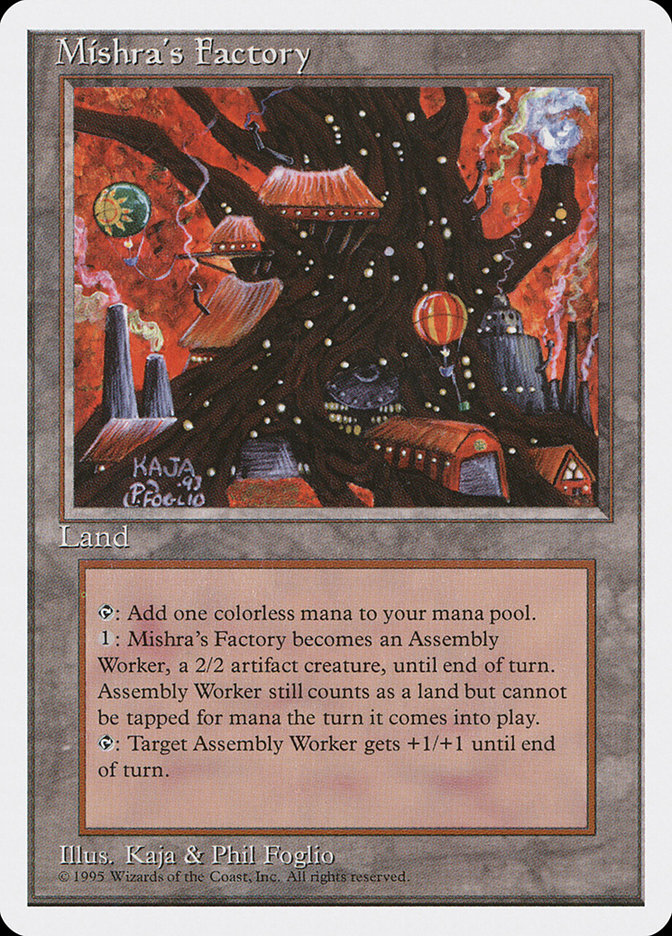Some decks, it seems, just flow.
You watch it play out, and it seems like most of the time, card after card keeps playing out with some great option played every single turn, or at least nearly so. Watching some decks play, it is almost as though they are especially blessed to feel perfect.
Then, conversely, you’re playing a deck with 17 lands, and somehow you manage to flood out, drawing more land than you need in far too many games. You cut a land and barely manage to ever get to the second land you need.
You play a deck with 26 lands, and somehow you don’t draw enough to do what you need, missing that critical fourth land drop not only on turn four but on turn five as well. You add a land, and sometimes it still happens – though you notice that now you also sometimes flood out too. You add another land and you start flooding out too often.
What is wrong with this picture? How is it that the 17-land and 19-land deck can flood out, drawing way more lands than they need, and yet the 25-land and 27-land deck can get mana screwed, drawing too few while still not being immune to flooding?
It’s very easy to fall prey to this problem. And, worse yet, not all decks can actually solve it.
Why does it happen that the low-mana deck can get flooded and the high-mana deck can get screwed? Is it just that our human minds sense the unfairness of the thing, the unlikelihood of the thing, and it stands out more when we see it?
Well, certainly, that is a part of it. Another big reason for it is simple: the low-mana deck is built to run on low mana, so even get a little bit of extra land can suddenly feel like you’re drawing air. Conversely, the high-mana decks require a significant amount of mana to get rolling such that even drawing one fewer land than you need or stumbling for a turn can make the deck feel like it is helpless.
Mana flood and mana screw have long been a huge part of Magic. Reducing their impact on games is actually a really huge part of increasing your ability to succeed.
So what can you do? It turns out, quite a lot.
Manipulation
One of the best things you can do is to simply nudge things along with library manipulation and card draw.
This is one of the lessons taught to us years ago by Turbo Xerox.
Spells (32)
- 4 Counterspell
- 3 Dissipate
- 4 Force of Will
- 4 Power Sink
- 4 Memory Lapse
- 4 Impulse
- 4 Portent
- 4 Foreshadow
- 1 Dream Tides
Sideboard

This is an oldie but a goodie.
Seventeen lands feels like an insanely low number of lands. But when you string it together with Portent, Impulse and Foreshadow, somehow it all works out. Does this remind you of anything?
Creatures (12)
Lands (19)
Spells (29)
- 4 Brainstorm
- 4 Lightning Bolt
- 4 Force of Will
- 2 Chain Lightning
- 3 Daze
- 4 Stifle
- 4 Ponder
- 2 Spell Pierce
- 2 Thought Scour
Sideboard

Much of what we think about when it comes to how Legacy mana works is strung together on the back of library manipulation. There isn’t a single ounce of card draw in Lauren Nolen’s Invitational-winning deck from a few years back, but with 4 Brainstorm and 4 Ponder, he’s able to get away with nineteen lands in a deck that would otherwise probably require at least 23 lands to function properly.
The library manipulation ends up smoothing out all of the rough edges, finding you mana when you need mana and gas when you need gas.
In Standard and Modern, respectively, those cards tend to look more like this:
Yes, card draw fits into the world of library manipulation too (albeit, often not for as cheap a cost). I’ve always said one of the best things you can do to fix your mana is to draw a card. But whether it is drawing extra cards or rearranging your library, either way can be a great start towards solving the problem of finding the right mix of lands and spells.
Sometimes you can do it in odd ways:
Creatures (3)
Lands (17)
Spells (40)
- 4 Ensnaring Bridge
- 4 Lantern of Insight
- 2 Pyrite Spellbomb
- 3 Pithing Needle
- 2 Thoughtseize
- 4 Ancient Stirrings
- 4 Inquisition of Kozilek
- 4 Mox Opal
- 2 Surgical Extraction
- 4 Ghoulcaller's Bell
- 2 Abrupt Decay
- 4 Codex Shredder
- 1 Ghirapur Aether Grid
Sideboard

If we think about what this deck is doing, the act of simply having Lantern of Insight in play is a very weak potential for manipulation. If worse comes to worse, you can sacrifice your Lantern of Insight to get a better draw. Far more often, however, you mill yourself with Ghoulcaller’s Bell and Codex Shredder to hunt out that perfect card, and a shocking amount of the time,you’re able to do so successfully.
One of the exciting things about this card, which keeps getting more and more attention (and rightfully so), is that if you get to that six mana you can absolutely end whatever crunch you’re in. Have too much land? Hold onto it and turn it into spells! Hand clogged with spells, and you’re hunting for land to cast Eldrazi with? Toss the hand away and get back a ton more!
At this point, you might be asking what about the poor aggro decks, and it is true – they often lack in this department. Sometimes there isn’t a real solution for that. Not all decks can be all things.
Activate!
Another thing that can really help decks is having activated abilities of any kind, but it is even better if your mana itself has activated abilities.
Take a card like this:
This is decidedly a great card. However, one of the things that makes it even better is that because it has useful activated abilities, it means that a flooded mana draw isn’t so painful because at least that extra mana can turn into something you can use.
This kind of thing is something that an aggressive deck can make use of. Check out Korey McDuffie’s SCG Tour® Open winning deck:
Creatures (17)
- 4 Leaf Gilder
- 4 Rattleclaw Mystic
- 3 Ulamog, the Ceaseless Hunger
- 1 Conduit of Ruin
- 1 Kozilek, the Great Distortion
- 4 Thought-Knot Seer
Planeswalkers (2)
Lands (25)
Spells (16)

You won’t see it in the maindeck, but if you look in the sideboard not only will you see that there is a card-draw element hiding in the board, you’ll also see Pia and Kiran Nalaar! Now, I’m not necessarily advocating that this is the kind of thing that you want to do in all aggro decks, but what it does show is the value in having the option to do more with your mana over a longer game.
More recently, we have this little doozy from Tom Ross:
Creatures (21)
- 4 Kolaghan, the Storm's Fury
- 3 Flamewake Phoenix
- 4 Thunderbreak Regent
- 2 Pia and Kiran Nalaar
- 4 Hangarback Walker
- 4 Thopter Engineer
Lands (26)
Spells (13)

In addition to the activated ability of Pia and Kiran Nalaar, we also have these two cards:
Incredibly importantly, though, is one of the most important things you can have in your deck to alleviate flood/screw woes: lands that activate. Tom has this:
Turning your excess land into something useful is a huge deal. Magic first really started seeing this in the form of two cards:
I still feel the deck that really highlighted this to the utmost, though, was Brian Kowal’s work on Ponza, the red-control mana-denial control deck that originated in the ’90s.

I wrote a little bit about the nature of Ponza almost ten years ago. Here’s a little bit of what I said then:
The key I’d like to talk about is “the Crust.”
When you have a sufficient amount of things do with that land, even an aggressive deck can make awesome use of its mana. Check out these two decks:
Creatures (23)
- 4 Chandra's Phoenix
- 4 Ash Zealot
- 4 Rakdos Cackler
- 3 Boros Reckoner
- 4 Stormbreath Dragon
- 4 Firedrinker Satyr
Planeswalkers (2)
Lands (25)
Spells (10)

Creatures (19)
Lands (19)
Spells (22)
- 1 Umezawa's Jitte
- 4 Incinerate
- 4 Magma Jet
- 3 Shrapnel Blast
- 4 Molten Rain
- 4 Chrome Mox
- 2 Smash to Smithereens
Sideboard

Both of these decks have things to do with their mana throughout the game. First of all, they both can attack with their lands. In addition, though, the Standard deck has Temple of Triumph to help find the spells or land you need, and the Extended deck can literally throw away its mana with Shrapnel Blast.
They both have ample activated abilities outside of their lands. While neither of these decks were maximized as aggro decks, they were absolutely wildly aggressive, and putting an opponent on the back foot was normal. Figure of Destiny might not be the fastest card in a red deck, but it can still come in pretty fast (especially if you manage to make it a 4/4 on turn two).
Not every aggressive deck has the means or the desire to act this way, though. There is another solution.
Finish It
If you can simply end the game, it won’t matter if you’re otherwise flooded. If you can finish the game, it won’t matter if you could use another land. Doing this usually require the ability to either hit big or make a major, earth-shattering event happen.
Think of it by thinking of these cards:
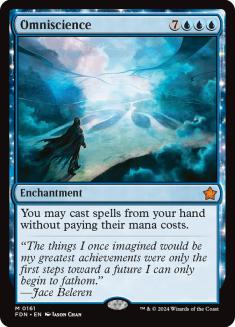
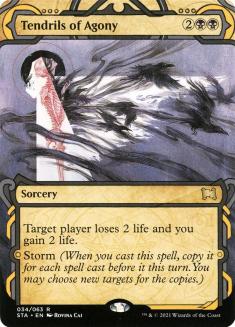
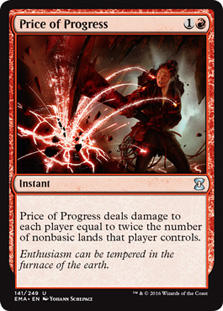
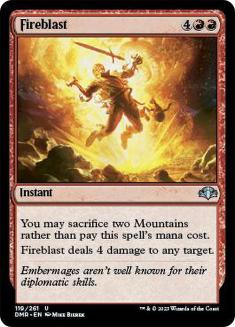
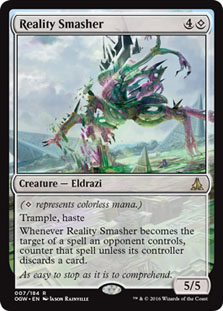
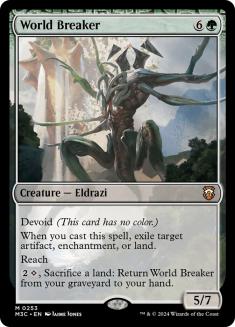
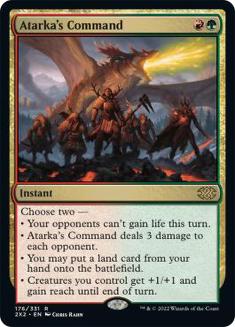
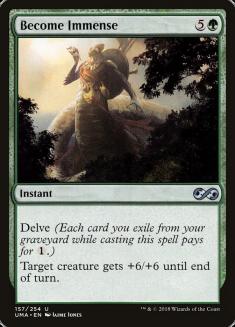
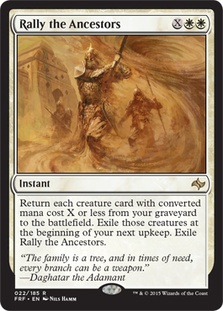
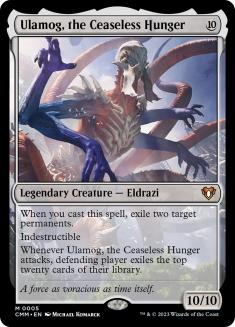
In a lot of cases, when these cards happen the game simply ends. If you can power out a Griselbrand, that’s usually all it takes for the game to be over.
Take the case of Standard with its various Eldrazi Ramp decks. Maybe they’re mana-heavy, but they have two big cards to leverage, Ulamog and Chandra, Flamecaller. They cast that turn-three Explosive Vegetation, for example, and they get hit with Duress, taking their Chandra. Just shy of the Ulamog, they say go, and a Transgress the Mind leaves them with nothing worth casting in hand, nothing to pay them back for all those turns spent ramping.
A part of the problem with the “Big Card” approach to dealing with mana flood is that if you have that card answered, you’re nowhere.
In a different example, you have the mana-screwed Atarka Red deck, choosing to throw-back towards a previous Standard by including Become Immense and Temur Battle Rage. The deck sits on its one land for far too long, hits a second land fairly late, and on a final turn it draws the third and can kill the opponent so long as the opponent lets any two creatures through. Become Immense into Temur Battle Rage ends it! … or doesn’t, because the opponent made the right call / had the trick / what-have-you.
The point of this second example is that if you have that explosive power to do damage and kill an opponent despite being short on lands beforehand, you can move directly from that point of screw into a win. The same would have been true if that Atarka Red player had been flooded. Conversely, if you don’t have that ability, having one of those games probably means there is no hope for you other than your opponent being in the same boat.
Wrap Up
Remember that the best ways to solve the flood/screw problem are twofold: fit in what library manipulation and cheap card draw you can, and have activated abilities – especially the activated abilities of lands themselves – to help ensure that any extra mana will still have a use. Barring that, try to play cards that can simply end the game.
This third option is the worst of options in many ways just because it is vulnerable to the normal interactions of Magic that happen in every game. Choosing to put cards into your deck that manipulate your library, draw cards or have activated abilities that spend extra mana is going to function far better simply because there are far fewer ways for an opponent to interact with these subtle choices. “Having a powerful card?” Well, don’t most decks try to maximize that, at least to some extent?
Some decks don’t have the ability to do those first two, best options. That doesn’t mean that those decks are bad or that they need to change to solve it, but it is something to consider: the cost may be worth it.
Take this deck from last year:
Creatures (15)
- 1 Frenzied Goblin
- 4 Foundry Street Denizen
- 2 Goblin Rabblemaster
- 4 Monastery Swiftspear
- 1 Lightning Berserker
- 3 Zurgo Bellstriker
Lands (20)
Spells (25)

It has some of the elements I’m talking about. Frenzied Goblin and Lightning Berserker can use up extra mana. Atarka’s Command and Goblin Rabblemaster (as well as a single Become Immense) could simply end the game. It even has a single Temple of Abandon.
All told, that isn’t much.
But that isn’t a strike against the deck in any way whatsoever.
Ultimately, you can never fully be all things. One of the costs of playing this deck is that you are sometimes going to get flooded and sometimes going to get screwed, and it will probably happen more to you than other decks which try to address that problem more fully. But it’s likely that with every choice you make trying to solve the flood/screw problem, in this case, you’re just watering down the deck. Unlike my Midrange Aggro deck from above, this deck isn’t trying to spend five mana on a Dragon. This deck is looking to get to three or four mana and stop.
With a powerful-enough deck, you can afford to ignore the whimsy of chance and just accept however the mana arrives. On the other hand, for many decks you ignore addressing this issue only at your peril.



